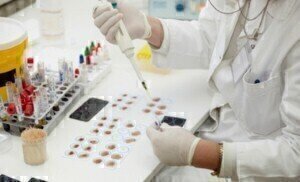News
Breast cancer cells spread by both tumorous environment and genetic changes
Oct 23 2012
The toxic spread of breast cancer is as dependent on the protein-rich environment of a tumour as much as on genetic changes inside tumour cells.
In a study released today (October 22nd) by researchers at Johns Hopkins School of Medicine in the US, it is suggested that a molecular signal in the protein meshwork surrounding the breast cancer cells may be the cause of initiation of the dangerous process of metastasis which causes the disease to spread throughout the body.
Further experiments have shown that the environment surrounding a tumour can even encourage healthy breast cells to invade neighbouring tissue just as cancer cells do and that a healthy environment can prevent cancer cells from spreading as they normally would.
"The most dangerous aspect of breast cancer is its ability to spread to distant sites, and most tumours are initially unable to do that,” said Andrew Ewald, assistant professor of cell biology at the Johns Hopkins School of Medicine and member of the Institute for Basic Biomedical Sciences’ Center for Cell Dynamics.
Mr Ewald adds that getting to know in particular what triggers metastases might give additional targets for averting and treating the malignant process that causes cancer deaths.
Scientists already understand that cancer spreads due to the gradual build-up of genetic changes, which occur alongside changes in the content of proteins.
Tests have also shown that these changes arise similarly with adjustments in the protein substance and three dimensional patterning of its meshwork that generates their immediate surroundings.
What has become clear in further tests is that the environment around a tumour plays a more direct role in cancer spread than previously thought.
When tumorous and healthy tissue fragments were surgically removed prior to the experiments, the boundary was disturbed, enabling breast cells to directly contact the protein meshwork further than the boundary.
In fragments of healthy mammary glands, the research team found that the self-corrective behaviour coincided with the re-creation of this protein boundary.
This told the scientists that tumours continue to listen to their environments.
"Our data suggest that tumours with genetic changes that favour cancer spread may not disperse until they are within a permissive environment," said the expert.
A dispersal-permissive environment is sufficient to incite invasive conduct in healthy and cancerous mammary tissue, he added, and the dissimilarity between the two can be a single genetic change that permits the dispersal to persist unchecked.
Posted by Fiona Griffiths
Digital Edition
Lab Asia Dec 2025
December 2025
Chromatography Articles- Cutting-edge sample preparation tools help laboratories to stay ahead of the curveMass Spectrometry & Spectroscopy Articles- Unlocking the complexity of metabolomics: Pushi...
View all digital editions
Events
Jan 21 2026 Tokyo, Japan
Jan 28 2026 Tokyo, Japan
Jan 29 2026 New Delhi, India
Feb 07 2026 Boston, MA, USA
Asia Pharma Expo/Asia Lab Expo
Feb 12 2026 Dhaka, Bangladesh



















